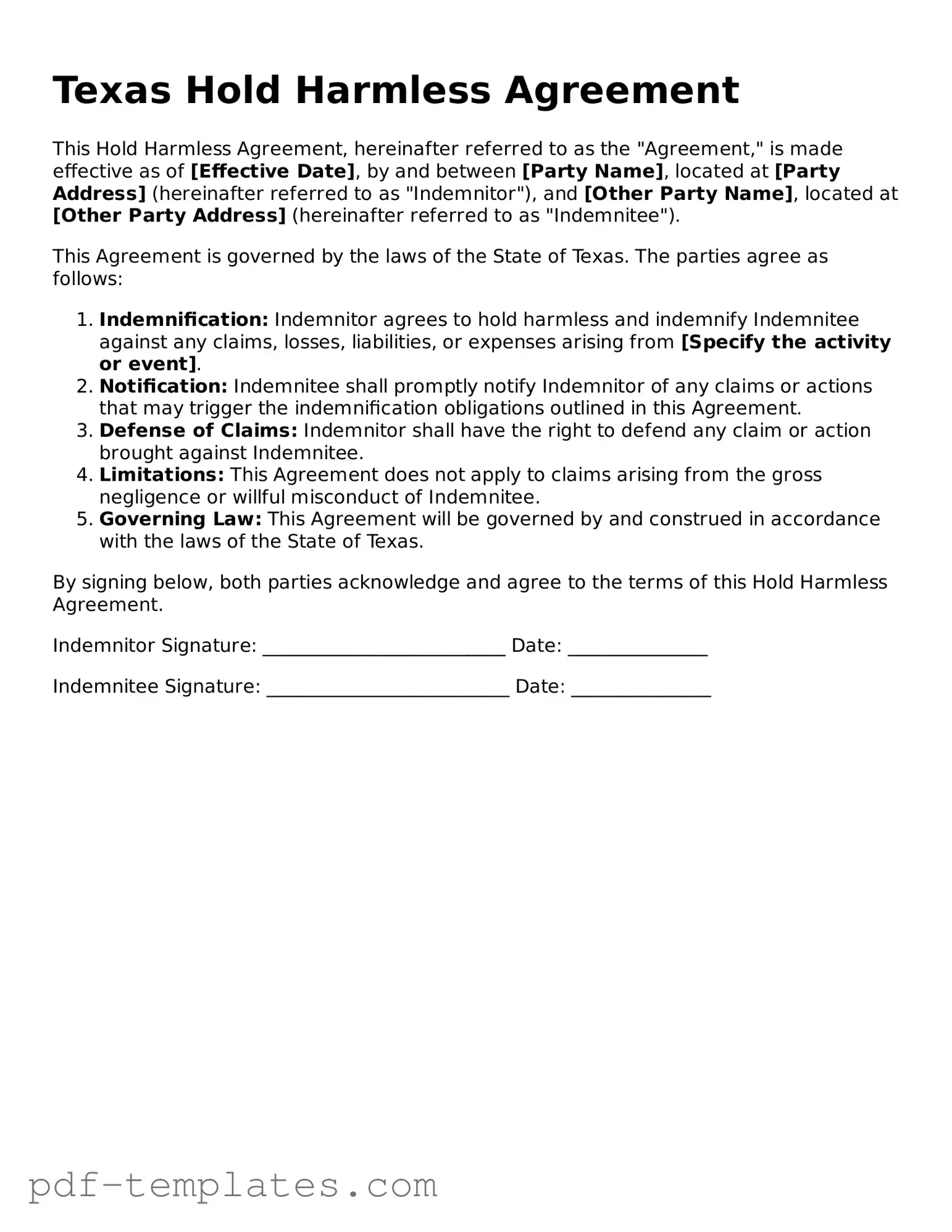The Indemnity Agreement serves a similar purpose to the Texas Hold Harmless Agreement. Both documents protect one party from liability for certain actions or events. In an Indemnity Agreement, one party agrees to compensate another for losses or damages incurred. This creates a financial safety net, similar to the protections offered by a Hold Harmless Agreement.
The Liability Waiver is another document that shares similarities with the Hold Harmless Agreement. A Liability Waiver releases one party from responsibility for injuries or damages that may occur during an activity. Individuals sign this document to acknowledge the risks involved, thus limiting the liability of the organization or individual hosting the activity, much like the Hold Harmless Agreement does.
The Release of Liability form is closely related as well. This document is designed to protect a party from claims resulting from negligence. By signing this form, individuals agree not to hold the other party accountable for any injuries or damages that arise. This aligns with the intent of a Hold Harmless Agreement, which is to ensure that one party is not held liable for certain risks.
An Insurance Policy can also be compared to the Hold Harmless Agreement. While an insurance policy provides financial coverage for various risks, a Hold Harmless Agreement shifts liability from one party to another. Both documents aim to mitigate financial loss, but they do so in different ways. The Hold Harmless Agreement focuses on responsibility transfer, while insurance provides a safety net against financial consequences.
The Service Agreement can also be likened to the Hold Harmless Agreement. While a Service Agreement outlines the terms of service between parties, it often includes clauses that limit liability for one party. This aspect mirrors the Hold Harmless Agreement's goal of protecting one party from claims or losses arising from the other party’s actions.
The Rental Agreement is another document that bears resemblance to the Hold Harmless Agreement. In many rental agreements, there are clauses that hold the landlord harmless from damages or injuries occurring on the property. This type of provision is similar to the Hold Harmless Agreement, as it seeks to protect one party from liability related to the actions of another.
The Partnership Agreement can also be compared to the Hold Harmless Agreement. In partnerships, members often agree to hold each other harmless for certain liabilities incurred during business operations. This agreement fosters trust and collaboration among partners, similar to the protective nature of a Hold Harmless Agreement.
The Employment Contract may also contain elements akin to the Hold Harmless Agreement. Employers often include indemnification clauses that protect them from legal claims arising from employee actions. This is similar to the Hold Harmless Agreement, which aims to shield one party from liability due to the actions of another.
Lastly, the Construction Contract often includes Hold Harmless provisions. In construction, contractors and subcontractors may agree to hold each other harmless for damages or injuries that occur on the job site. This ensures that liability is clearly defined and that parties are protected from unexpected claims, paralleling the purpose of a Hold Harmless Agreement.
